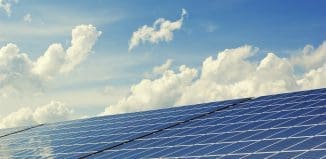New Solar-Electric Aircraft was Designed for High-Altitude Missions
This post is also available in:  עברית (Hebrew)
עברית (Hebrew)
As more and more advantages of renewable energy are being taken into account in the field of aerial transportation, a new environmentally-friendly autopilot aircraft has been exposed.
Elektra Solar commissioned its new redundant autopilot system, successfully demonstrating several autonomous flights with its high-altitude long-endurance aircraft Elektra Two Solar. Another pilot was on board for safety reasons, but he did not have to intervene at any stage of the flights.
This two-seats standard aircraft is designed for science and surveillance purposes in high altitudes. The solar-electric aircraft has been designed for extreme records in range, endurance and stratospheric altitudes up to 24 km as well as surveillance purposes from high altitudes.
The aircrafts can carry payloads of up to 100 kg. The double-redundant, solar-electric propulsion system is powered by the sun.
Due to the 2 times redundancy in the electric propulsion system and the 3 times redundancy in the control, the aircraft are extremely reliable and safe. In addition, there is a robust construction of the structure that allows uncomplicated and economical operation of the systems.
The company manufactures manned and unmanned aircraft for scientific and commercial missions. The development of control algorithms and systems is supported by close cooperation with the DLR Institute of Robotics and Mechatronics. One of the company’s objectives is to be able to realize day and night flight missions for a wide variety of economical applications, according to uasvision.com.
The virtually noiseless operation meets today’s requirements for environmentally friendly aviation. The development of the highly-efficient “Energy Saving Concept” is supported by the latest state of the art extremely powerful solar cells.
“We have taken a giant step towards the stratosphere and are very optimistic that we will be able to fly in a short time with our next aircraft at altitudes up to 20 km. We are not yet able to achieve this goal with the current aircraft. However, in order to achieve this, we followed new paths in the manufacture of the next aircraft in process and production technology” Dr. Konstantin, managing director of the company said.



























